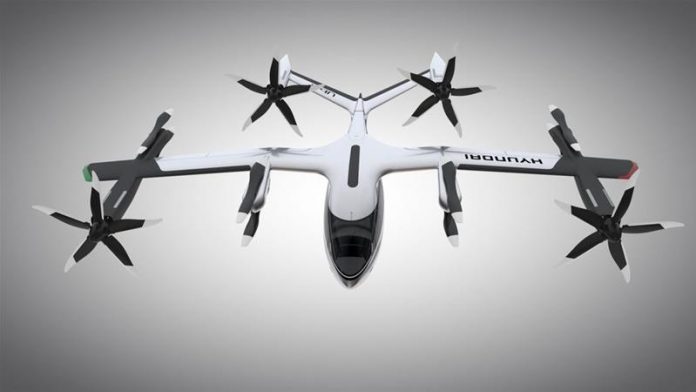The two companies plan to display a model of the vehicle that can seat four and reach up to 320 kilometres per hour.
Uber Technologies Inc. is working on a flying car with Hyundai Motor Co., the first automaker to buy into Uber’s dream for a network of air taxis dotting the skies of major cities.
The two companies outlined their partnership Monday at the CES technology conference and plan to show off a full-scale model of the vehicle this week on the trade show floor in Las Vegas. Hyundai’s aerial taxi would be able to take off and land vertically, accommodate four passengers and cruise at up to 200 miles per hour. It would be fully electric with a range of 60 miles.
The concept is similar to those designed by Boeing Co. and a handful of other companies in collaboration with Uber Elevate, the ride-hailing company’s aerial division. In addition to sci-fi ventures, the group also oversees Uber helicopter rides, which are available in New York City. Uber has said it will conduct the first public demonstration of a flying car this year and allow customers to book aerial rides by 2023.
In more terrestrial pursuits, Uber said earlier Monday that it’ll start selling bus tickets through its app in Las Vegas, making it the second city to sign up for a public transit program the company introduced last year. Customers in the city will see public transit as one of the options in the Uber app, alongside car rides. They can then plan their route and purchase tickets for the same price they would pay using traditional methods. Riders will be able to use the tickets when their phone is offline. Uber expects to introduce the feature to additional cities around the world in the coming months.
Selling bus tickets is the latest deviation from Uber’s core ride-hailing business, part of a larger strategy to encourage customers to open the app more frequently. The company sees increased usage as a way to drive people to other services, including delivery of meals or groceries, rentals of electric bicycles or scooters and someday, flying car rides.
The company’s transit partnership with Las Vegas is nearly identical to an arrangement it made last year with Denver, the first place where Uber offered public transit ticketing. While there are just two cities that support ticket sales through the app, Uber and its main U.S. competitor, Lyft Inc., both display public transit routes for many more places.
David Reich, Uber’s head of transit, acknowledged that the feature may deal a blow to Uber’s main business among cost-conscious customers. He said the trade-off is worth it if people learn to use Uber more regularly and trust it to offer comprehensive transportation information. “Sometimes they’ll take something other than Uber, and that’s OK,” Reich said.
Las Vegas will get a new transit option as soon as this year, courtesy of Elon Musk. A startup founded by the billionaire, called Boring Co., broke ground last year on a tunnel beneath the Las Vegas Convention Center, where CES is held. Musk plans to pack riders into vehicles designed by Tesla Inc. zooming through the narrow tunnel. Reich said Uber is open to conversations with Musk but that there’s currently no plan in place to sell tickets for Boring Co.’s Loop transit system.
For the flying car project, Uber is working with NASA and a half-dozen manufacturers, including Textron Inc.’s Bell and Joby Aviation. The arrangement with Hyundai stands out because the automotive giant could produce air vehicles at “rates unseen” in the aerospace industry, said Eric Allison, the head of Uber Elevate. High volume would, in theory, decrease the price per trip and make an air taxi network financially viable, he said.
Uber said it’ll provide partners with airspace support services, connections to ground transportation and a large base of customers. The companies will collaborate on finding places for the vehicles to take off and land, with Uber likely leveraging existing relationships with real estate companies including Hillwood Properties and Signature Flight Support.
While Uber has held talks with the Federal Aviation Administration, the effort is likely to face heavy scrutiny from the regulator over logistics for takeoff and landing, noise and safety concerns. Hyundai said its vehicle will require a human pilot initially and eventually operate autonomously. Neither Hyundai nor Uber provided a timeline for dispensing with human pilots.
The move represents a pop of innovation for Hyundai, which, like other car manufacturers, has been hit by changing consumer habits that favor access over ownership and a preference for vehicles not powered by gasoline. For Uber, the arrangement expedites ongoing efforts to evolve from a ride-hailing company to a de facto global transportation and logistics provider. It may also offer a welcome distraction from Uber’s stock price, which has slipped about 30% since its disappointing initial public offering last year.
SOURCE: BLOOMBERG

Putting a spotlight on business, inventions, leadership, influencers, women, technology, and lifestyle. We inspire, educate, celebrate success and reward resilience.















